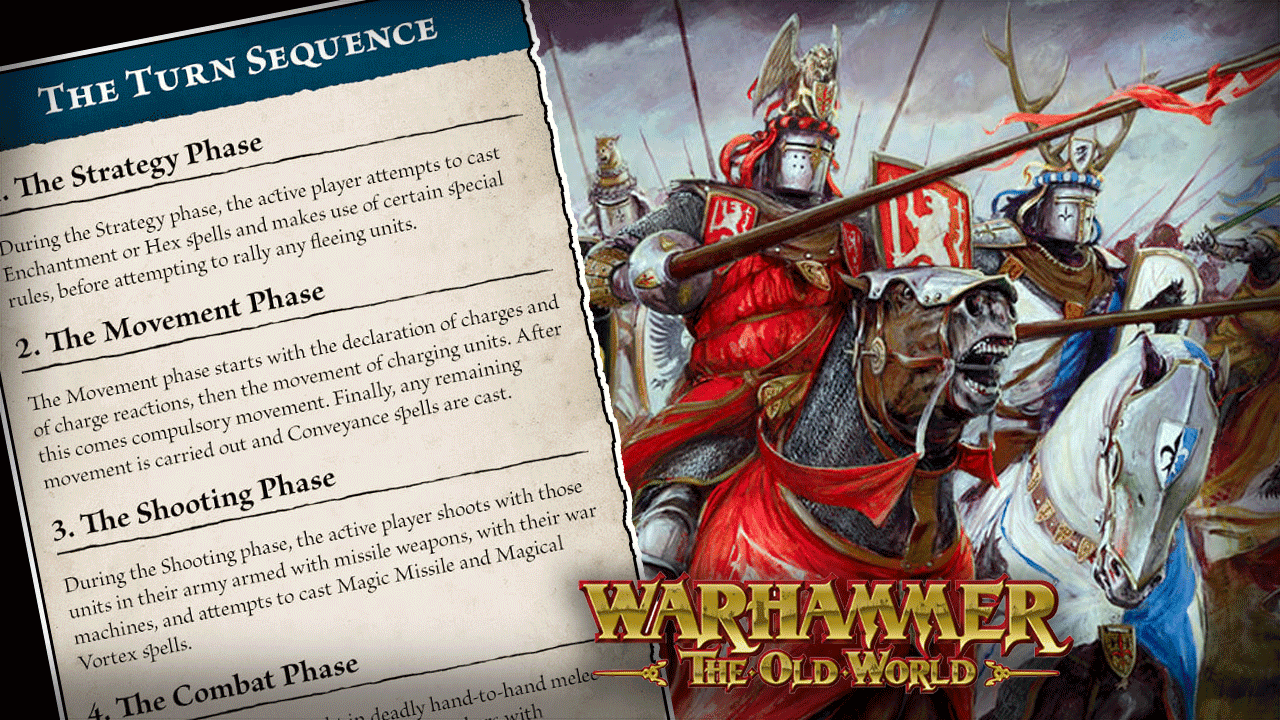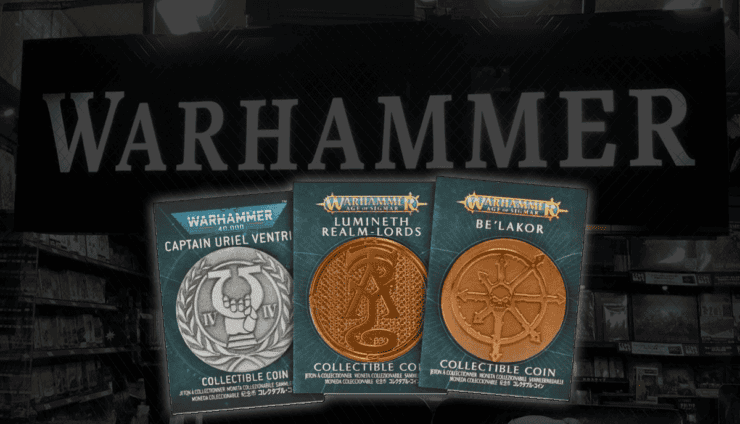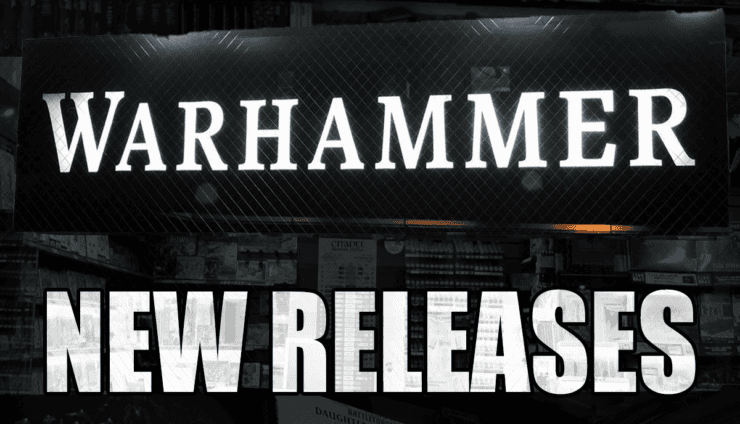Don’t miss the latest on how the combat phase in Warhammer Old World works and some entirely new rules that have been revealed!
They mentioned the release date will be Early 2024. However, as they said before, not everything will be new (or even in plastic). If you want to see more on the Warhammer The Old World launch line-up, you can check that out here.
This is the third real look at the rules we’ve gotten, so it’s nice to have an idea of how the game will play! For now, though, it’s time to start pouring over the rules and see if they are shaping up the way you dreamed of!
Plus, in Warhammer the Old World, ALL 8th Edition Fantasy armies would be playable! So now we will truly see plastic, resin, and metal minis on the same tabletop when the game finally releases!

- GW Announces Warhammer Fantasy Returning (sort of)
- Warhammer Old World Release Date Details & Starter Set
- Fantasy Bears! More Kislev Previews For Warhammer Old World
- Bretonnians, Tomb Kings, Orcs & More Confirmed in Warhammer Old World!
- Warhammer The Old World: Everything We Know So Far
- First Look At New Warhammer The Old World Rules
New Combat Phase Rules Revealed For Warhammer The Old World
The new Combat Phase rules for Warhammer The Old World rules come from Warhammer Community.
You may not be surprised by this point to discover that the fourth and final phase of the Game Round is divided into four simple steps: Choose & Fight, Calculate Result, Break Test, and Pursuit. As with the Shooting phase, these steps are followed in order for each separate combat. It’s too complicated to summarise in full here, but this article should give you a flavour of how it all works.
You begin the phase by choosing which combat you want to begin first. In general, fighting happens in ranks, and only the first rank* of an engaged unit can fight. However, a unit with a wider fighting rank than its opponent can still attack with every model in that rank – your troops surround and envelop the other regiment.
There are plenty of wrinkles to this – some models may make supporting attacks from a deeper rank, multiple units can be engaged in the same combat, and any model that is able to fight without being in base contact may only make one attack this turn.
Well, the biggest thing here is your whole front rank gets to attack whether they are in base to base or not (but only one attack), meaning giant blocks can get an insane number of attacks, and there are still things like spears to get more than one rank of attacks.
Once you’ve worked out who can fight, it’s time to determine Initiative for each model and see who strikes first. The model with the highest Initiative statistic strikes first, and so on down the order – with a bonus for charging and a bigger one for hitting them in the flank or rear. There could still be a situation, however, in which a lumbering foe like a Stone Troll (Initiative 1) may find itself striking second on the charge against the preternatural senses of a Swordmaster of Hoeth (Initiative 6).
Initiative is one of the best mechanics of Fantasy, and it’s making a triumphant return!
Weapon Skill & Rolling to Hit
The big news here is that we’re back to the classic Weapon Skill stat – which means higher WS is better, and that to work out each model’s roll to hit, you must compare your WS against theirs. Yes, the To Hit Chart is back and it’s as beardy as ever. Bad news if you’re a Goblin Spearman, but fantastic for that Bretonnian Duke who’s about to skewer them.
More than double either gets you a 5+ or a 2+. You better start training your minis so their WS is nice and high!
You roll as many dice as your engaged models have Attacks and, with the higher Initiative models striking first, a charging unit has the opportunity to overwhelm its enemies before they have the wit to swing back. Next, you roll to wound and make armour saves as normal.
Casualties are removed from the back ranks, representing the rear ranks stepping forward as their comrades bite the dirt. Set every death in each unit aside – you’ll need to tot them up for the next step…
There’s nothing too crazy here, and it looks pretty similar to before.
Calculating Combat Results
Combats in Warhammer: The Old World are usually decisive – one side or the other makes the breakthrough, and the loser is pushed back or breaks. Unlike in other Warhammer games, you don’t flee based on your Leadership alone; you have to calculate the Combat Result – in other words, you work out who’s won by totting up who’s killed who.
It’s not just how many deaths you’ve caused, however – you get bonuses for complete ranks, for having the high ground, for standard bearers, and for attacking the side or rear.
It’s so good to see combat results come back! You get points for wounds, ranks, standards, flanking, and much more! This makes combat really fun, as giant units can win by just being big.
Add it all up and see who’s won. If it’s a draw, combat continues next turn, but if there’s a clear loser, they must take a Break Test. This is a Leadership test modified by how much you lost the combat by, and with several outcomes:
-
- If the natural roll is higher than the Leadership stat of the testing unit’s leader (either that of its Champion or of a Hero model that’s joined it), then the unit Breaks and Flees
- If the modified roll is higher than the Leadership stat, but the natural roll is lower, the unit Falls Back in Good Order
- If the modified roll is lower than the Leadership stat, or if you roll a double 1, the unit Gives Ground
As you can see, this is a substantial change to combat rules from the last few editions of Warhammer Fantasy Battles, and instead combines and refines a selection of rules from earlier editions and spin-offs of the game. It may seem complex at first glance, but it’s a mechanic that quickly becomes clear once you’ve run through a few combats – and it adds a ton of tactical depth to the most important part of the game.
This is a decent amount different than before, but you break if you roll higher than your natural leadership, but even if you lose, you still give ground.
Warhammer The Old World Combat Phase: Run Them Down!
When you win a combat, you have a range of choices depending on how the enemy reacts:
-
-
- Restrain – pass a Leadership test to avoid pursuit and instead reform your ranks for free
- Follow Up a unit that gave ground, re-entering combat a few inches forward
- Pursue a unit that flees or falls back. If you catch a fleeing unit, it’s cut down and destroyed. If you catch a unit falling back, combat begins again and the pursuer counts as having charged
-
-
- Overrun – in the case that the victor has completely killed its target, it may make a full move directly forward… and if you end up in another combat, that counts as a fresh charge. Clever use of Overruns will have heavy cavalry licking its lips…
The full overrun mechanic is back, and if the opposing unit flees, you can completely destroy them! Then, you can still charge back in, depending on what the enemy did.
Warhammer The Old World Combat Phase: Magic
There’s plenty more to the Combat phase – Wizards can use Assailment spells, for instance, while units fighting from behind a barricade or wall benefit from the extra protection.
Hammerhand is actually a pretty strong combat spell with AP-2 and could turn the combat in your favor. Then, Soul Eater isn’t nearly as good against big units but can kill a character in one go. You just have to wound with that S3 hit, and you’ll deal three wounds!
All the Latest Warhammer Rules & Model Rumors
What do you think about all the new Warhammer The Old World rules so far like these for Combat?
Let us know in the comments of our Facebook Hobby Group, or our new Discord server, and make sure you enter the latest monthly giveaway for FREE today!
Click Here To Follow Us On Google News
Get ad-free access to our hobby videos, a monthly drop of miniatures, and support some of the best creators out there for as little as $6 a month on Patreon!















